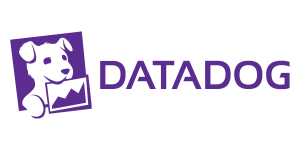
Datadog – SendQuick Cloud Integration Guide
Version 1.1
1.1 About SendQuick Pte Ltd
SendQuick™ develops and offers enterprise mobile messaging solutions to facilitate and improve business workflow and communication, and is widely used in areas such as IT alerts & notifications, secure remote access via 2-Factor Authentication, emergency & broadcast messaging, business process automation and system availability monitoring.
In addition to functionality, SendQuick’s messaging solutions have also been developed with other key features in mind. These include security and confidentiality of company information, and ease in mitigating disruption during unplanned system downtime such as that arising from cyberattacks.
1.2 About SendQuick Cloud
SendQuick Cloud is a cloud based Software-as-a-Service (Saas) application to monitor and notify for cloud based incidents with omni-channel messaging capability. It has ability to monitor using ICMP Ping, Port check and URL check. It has policy based notifications using Email and Webhook, supporting any applications as well as Cloud Providers like AWS, Azure, Alibaba Cloud, Google Cloud and Oracle. Given the above integration methods, SendQuick Cloud is able to work with any applications to send notifications. Supporting notification channels include SMS, Telegram, Slack, Facebook Messenger and others. Lastly, there is Roster for messaging based on duties and time frame for each recipients, reducing alert fatigue.
1.3 Purpose of Document
This document is a guide on how to integrate SendQuick Cloud with Datadog to send message notifications and alerts. In this guide, we will be using SendQuick Cloud for the integration.
In Datadog, you can send Alert via Email (SMTP) method. This document will explain this in detail in the following sections
2.1 Email Filters in SendQuick Cloud
SendQuick Cloud can receive any emails (SMTP) from any applications, apply the configured filters (policies) and if the condition matches, messages will be sent to the recipients. When starting to configure, create an account in SendQuick Cloud and go to Email Filter (left Menu) and Create New Mail Filter Rule. You will be presented with the interface as shown below.
You will notice the Email Address TO as the first Policy item. The email address is pre-assigned by SendQuick Cloud and will follow the name of your account name. This email address cannot be changed and will be used to configure in Datadog as explained in section 3.1.

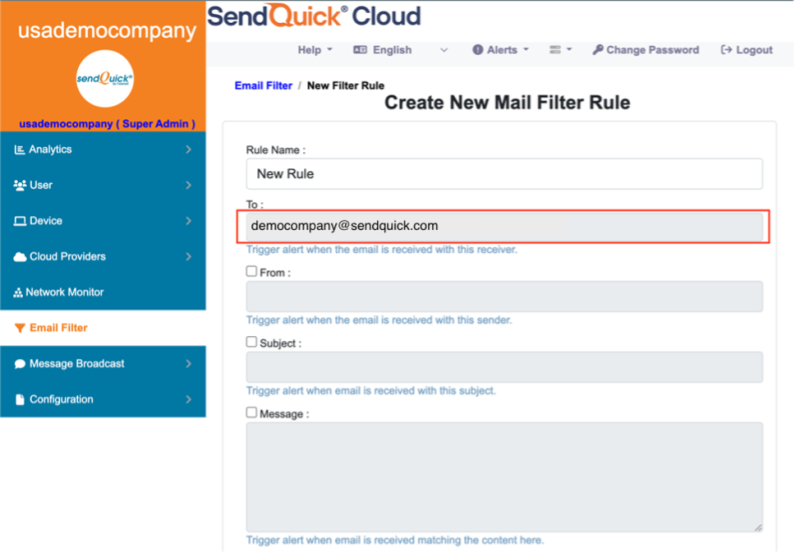
Check the checkbox of policy item FROM, and key in the email address ‘alert@dtdg.co’. Ensure that the check box ALL is selected under the MATCH MODE policy item.

These settings are configured such that when an email is sent from ‘alert@dtdg.co’ (Datadog) to ‘democompany@sendquick.com’ (SendQuick Cloud), an SMS containing the contents of the email will be sent out to the allocated recipients.
3.1 Configure Email Alert Rules
In Datadog’s navigation bar, select Monitors. Then select New Monitor to create an Alert Rule.
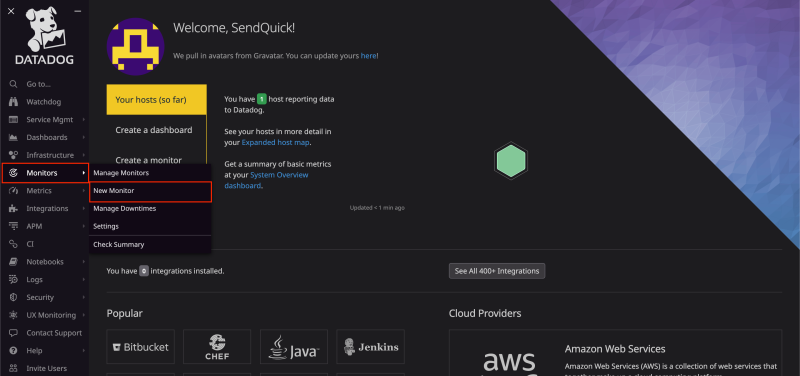
Within the New Monitors Page, select the desired monitor as shown in the image below. For this example, we will choose to monitor for anomalies.
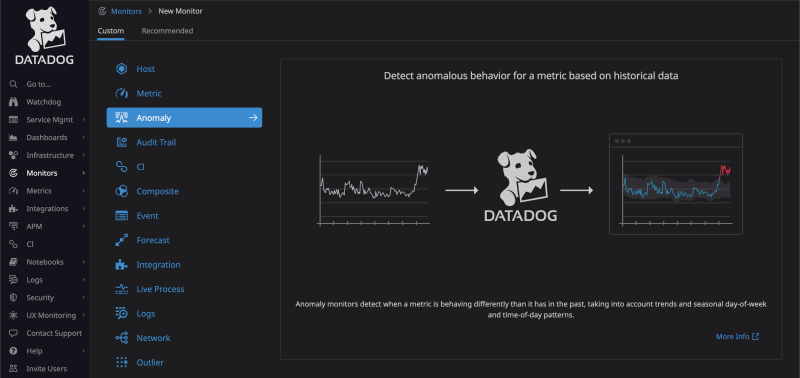
Subsequently, we will configure the alert rules. The configuration options are highlighted in the image below.

3.2 Configure Email Alert Contact for SendQuick Cloud in Datadog
After configuring the alert rules, we will configure the email recipient to be SendQuick Cloud. Within the monitor configuration page, under Notify your team, in the box highlighted in the image below, type in the email address pre-assigned by SendQuick Cloud.
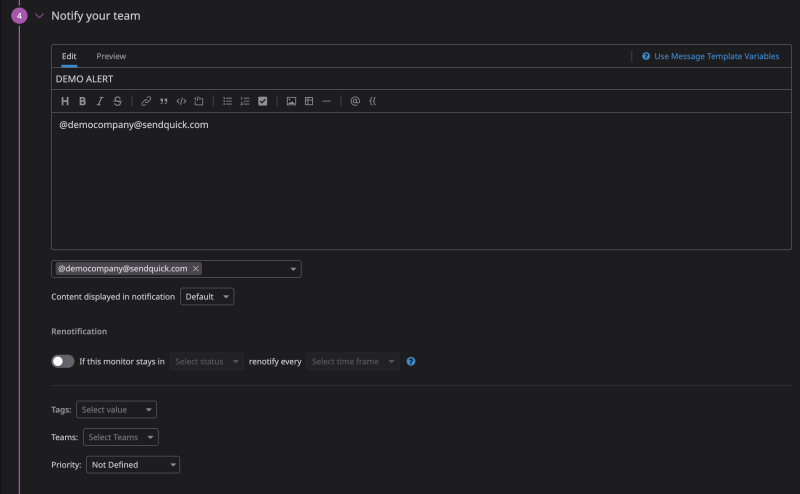
Select Create.
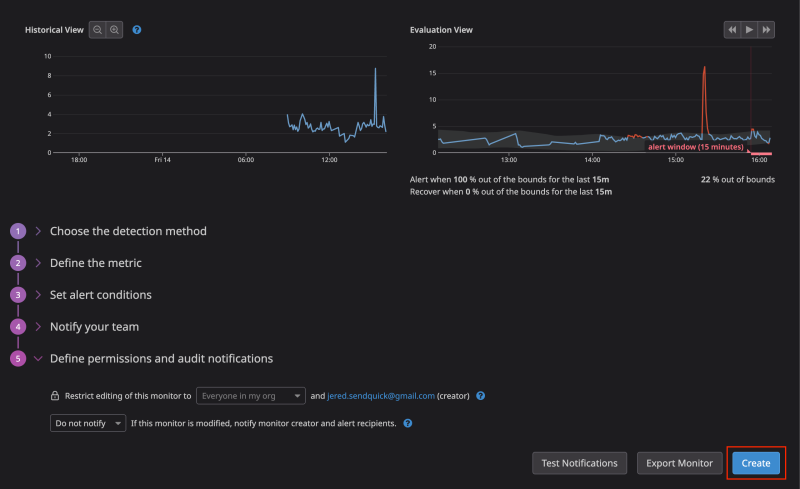
The monitor has been created.

You can create more rules, as desired and use Email to send the notifications to SendQuick Cloud.
Upon completion, you can start using SendQuick Cloud and configure all the filter/policies and user roster to receive the alerts on their phones. For more SendQuick Cloud configuration, refer to SendQuick Cloud User Manual or Video Tutorial.
